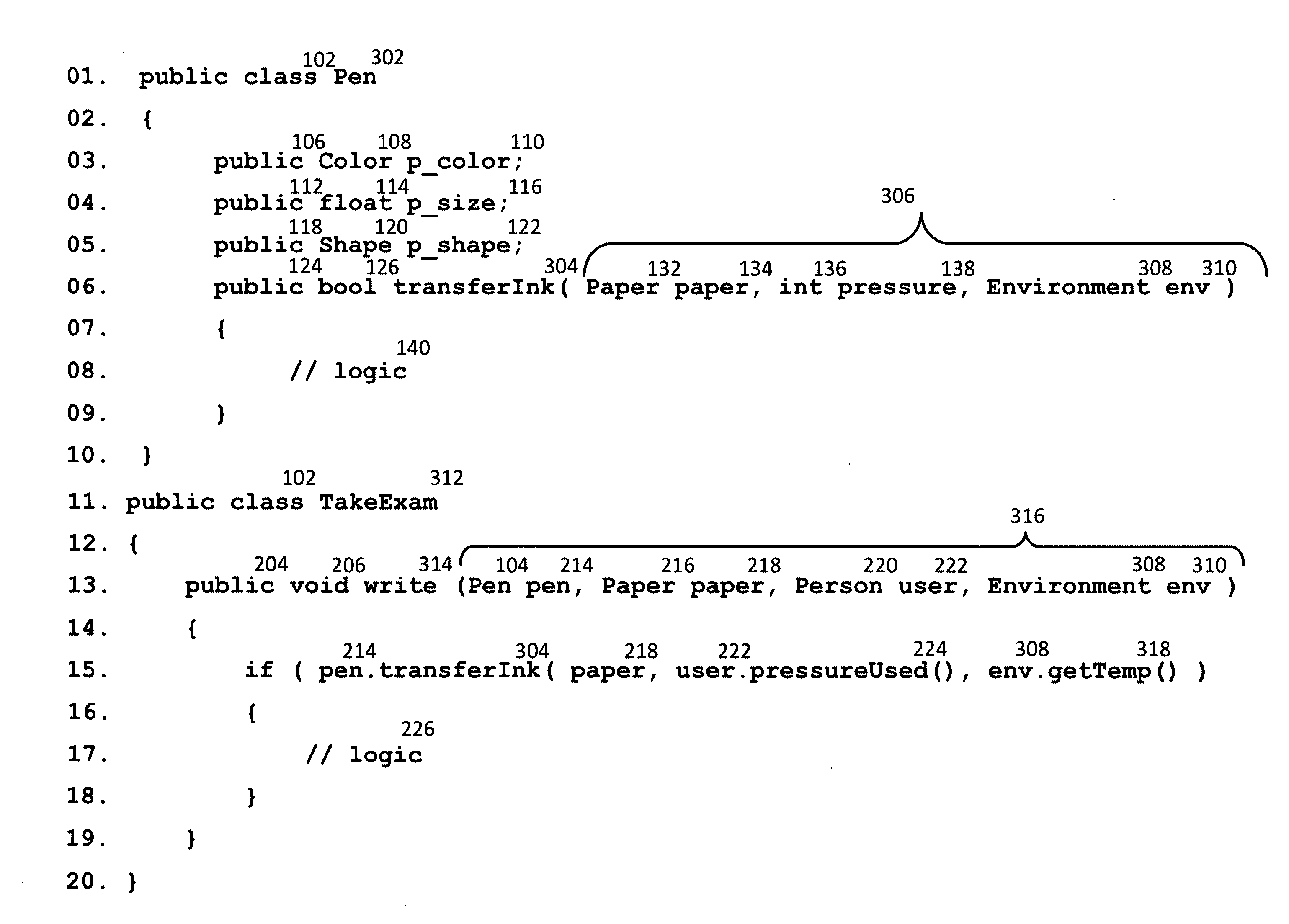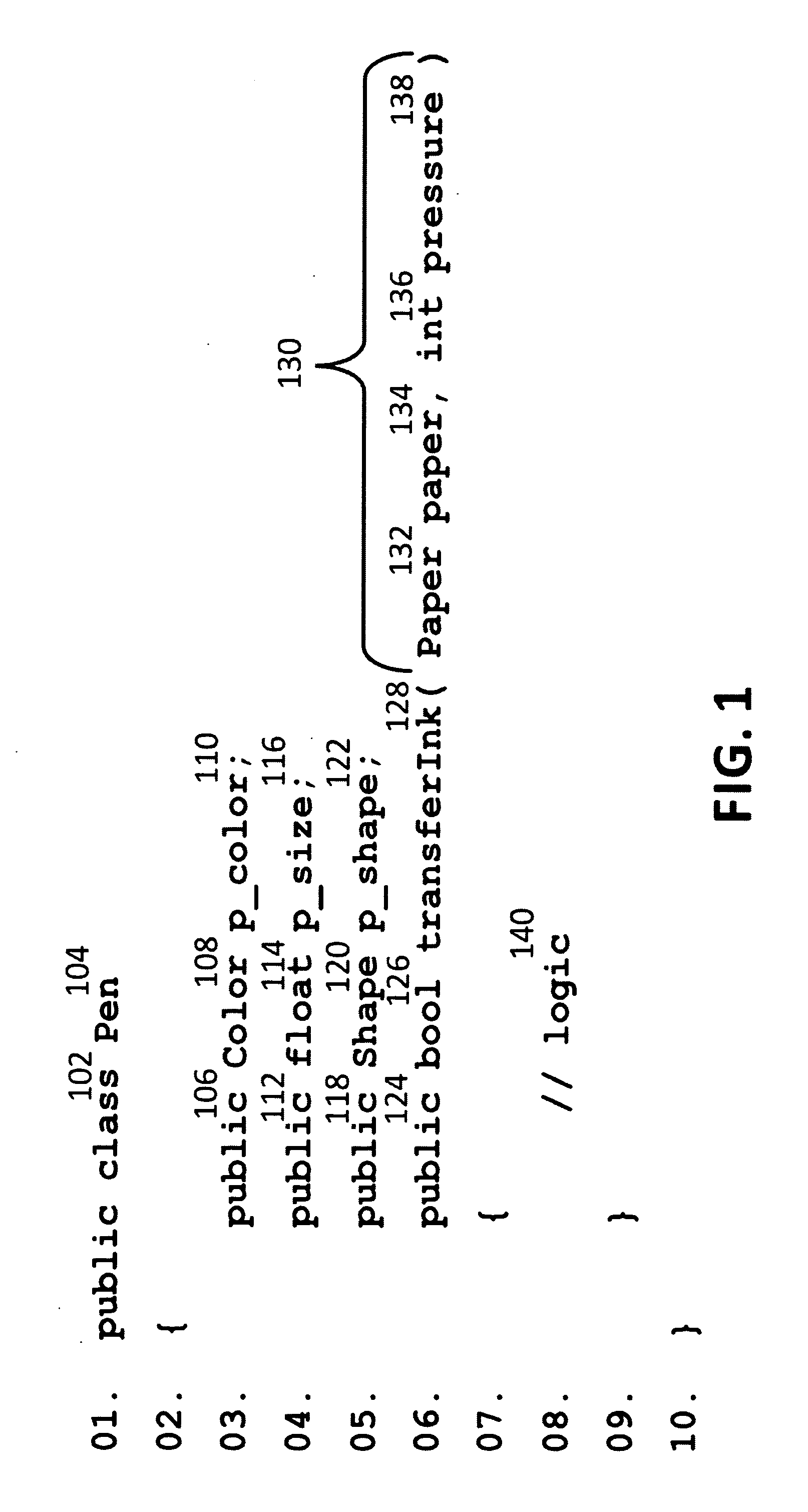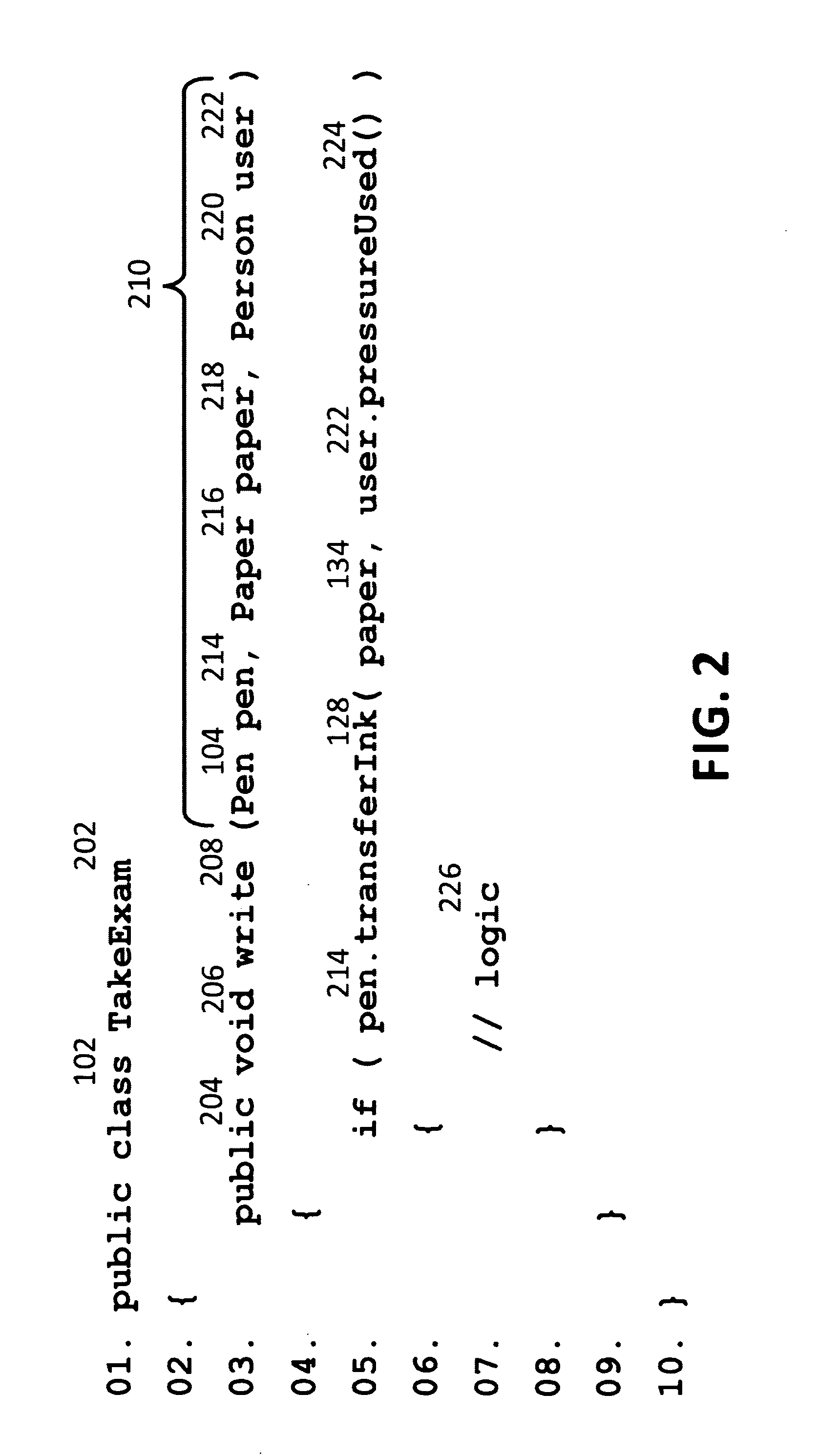Rapid process integration through visual integration and simple interface programming
a visual integration and process technology, applied in computing, instruments, electric digital data processing, etc., can solve the problems of complex computer programs, difficult problems, complex computer technology, etc., and achieve the effect of simplifying object interaction, code reuse, and object modularity
- Summary
- Abstract
- Description
- Claims
- Application Information
AI Technical Summary
Benefits of technology
Problems solved by technology
Method used
Image
Examples
example 1
[0087]FIG. 8 depicts an application of the methods discussed herein. A static 802 Main 806 which returns void 804 is declared. Main 806 is a standard way by which a program describes the entry point into a program from an operating system. However, the name doesn't have to be main nor does it need to return a void 804 and so on. One experienced in the arts will simply recognize Line 01 as an entry to a program.
[0088]Ccm 808 is of type RootCCM 502 created through constructor RootCCM( ) 810. Ccm 808 is added to ThreadManager 402 through add 414. After ccm 808 is added to ThreadManager 402 a pen is created and added to CCM starting at Line 06. iPen 812 of type Pen 602 is created by calling constructor Pen( ) 814. iPen 812 has property id 816 which is assigned a string with the value of “pen”818. iPen 812 is then added to composite 506 of the ccm 808. iLocator 820 of type RootCCMLocator 520 is created by calling constructor RootCCMLocator( ) 822. itemToFind 524 or iLocator 820 is assign...
example 2
[0092]Referring to FIG. 9, RootCCM 502 has been further described in RootCCM 902. Composite 506 of type object[ ]504 is an aggregate responsible for storage of data exactly similar as that described in FIG. 5. itemToRun 906 of type object 904 contains the necessary configuration to decide what action to take when withObject 910 is called. Specifically, this logic is described in scope get 912. withObject 910 of type object 908 is providing the common access behavior for RootCCM 902. Starting with Line 11, withObject 916 is called on itemToRun 906 and the resulting object is set in itemToExecute 914. The value of itemToRun 906 could be an instance of any object. Based on existing examples, itemToRun 906 could be an instance of Pen 602, TakeExam 702 or even RootCCM 902. Line 12, withObject 918 of itemToExecute 914 is called and the result returned. Once again, the result object in itemToExecute 914 could be an instance of any object including, but not limited to, example objects Pen 6...
example 3
[0098]Referring to FIG. 11, another approach to access of CCM within properties is provided. The contents of FIG. 11 relate to RootCCMLocator 1102 are logically similar to the contents of FIG. 5 RootCCMLocator 502. In FIG. 05, access to CCM is done through ThreadManager 402. In another aspect of the present invention, access to CCM is provided by an implied parameter. Memory 1014 is an implied parameter passed to actualValue 1110. Value 1118 is also an implied parameter to actualValue 1110.
[0099]When accessing scope get 1012 within a program, implied parameters memory 1014 is passed to property actualValue 1110. Memory 1014 provides access to RootCCM 502. Line 08 of FIG. 11 is logically similar to Line 18FIG. 5. When accessing scope set 1116, implied parameters value 1118 and memory 1014 are passed to property actualValue 1110. Line 12 of FIG. 11 is logically similar to Line 22FIG. 5. In both cases, ThreadManager 402 is no longer required to obtain access to CCM.
CCM Memory
[0100]Refe...
PUM
 Login to View More
Login to View More Abstract
Description
Claims
Application Information
 Login to View More
Login to View More - R&D
- Intellectual Property
- Life Sciences
- Materials
- Tech Scout
- Unparalleled Data Quality
- Higher Quality Content
- 60% Fewer Hallucinations
Browse by: Latest US Patents, China's latest patents, Technical Efficacy Thesaurus, Application Domain, Technology Topic, Popular Technical Reports.
© 2025 PatSnap. All rights reserved.Legal|Privacy policy|Modern Slavery Act Transparency Statement|Sitemap|About US| Contact US: help@patsnap.com



